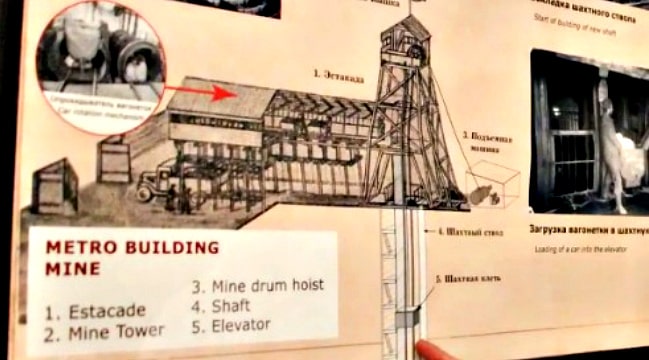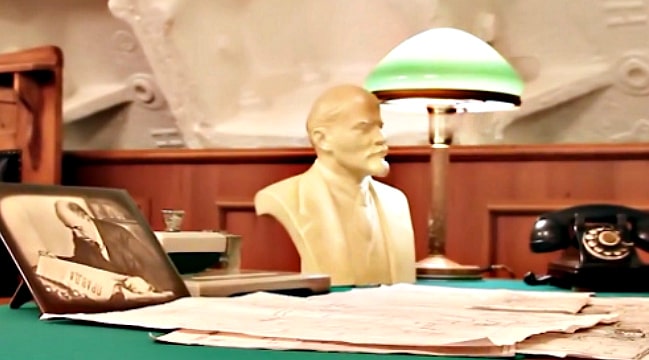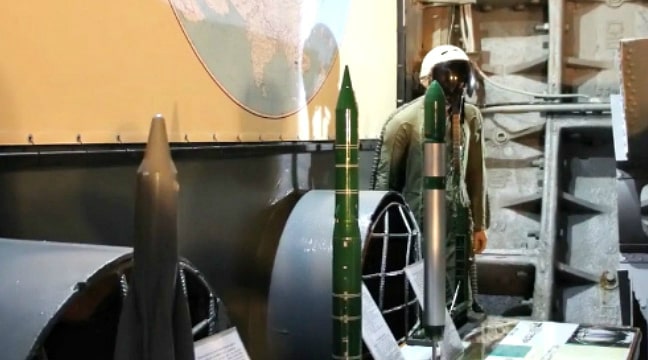The underground is indeed a place with a mysterious side: be it a natural cave, dungeon, crypt, or winding manmade catacombs. Yet the hideaways created by humans in the atomic age keep many secrets.
History: Where and When It All Began
Of course, not all the secrets about Soviet bunkers have been unsealed, and there are for sure tons of documents and locations that are still classified and locked.
According to declassified secret information, the first bunker for Stalin was built in the 1930s. This construction was created as part of the governmental program of the national defense capability. At that time, the USSR suspected the possibility of an upcoming war, and for that reason, the country began strengthening its army, constructing military objects, roads, airfields, weapons, and buildings that would help withstand the probable threat of a military confrontation with Nazi Germany.
It is worth mentioning that most large construction works of that time in Russia were designed to serve multiple purposes. As such, the Moscow Subway was projected not only as a convenient means of transportation but also as a safe civil defense bomb shelter for the unfortunate case of war.
Every detail was thoroughly thought through, for instance, large manufactories making cars or tractors could be converted for building tanks in a short time if that would be necessary.
Even the possibility of switching the role of food factories to producing guns, bullets, and gunpowder without the need of changing the plant equipment was taken into consideration. Can you imagine that? And all of the preparation was implemented in the regime of complete and ultimate secrecy.

Obviously, other underground military objects, buildings, posts, as well as underground communications were built simultaneously together with the metro, which to some extent played the role of camouflage for the top-secret military construction projects.
Did you know?
It is believed that the reason for making Moscow's metro stations so beautiful and luscious (and, thus, why the best art specialists in the country were hired to adorn the stations' interiors) was to avoid suspicion from the subway's actual dual-use.
Stalin's Bunker
Among the most well-known locations of that kind is Bunker-42. This unique place is located in Moscow in the Ismailovo District and was disguised as a regular building next to a sports complex and huge central stadium. Surprisingly, most local residents of the area didn't even suspect the existence of the bunker until 1996!
Today it is home to the historical museum called "The Reserve command post of the Supreme Commander of the Red Army IV Stalin during the Great Patriotic War of 1941-1945", or "Stalin's Bunker" for short. So if you're interested in history, a Stalin Bunker tour would be a great add-on to your Moscow tour.
One of the biggest shocker facts about this strategic object is that it was built at a depth of more than 50 meters (164 feet). Plus, it was directly connected to the Kremlin by an underground tunnel road — aka "Metro-2" — that is 17 kilometers (about 11 miles) long. As claimed, Stalin was taken to the bunker by car via this road to visit the bunker in 1941 and that he spent the harshest days at the beginning of the war when there were severe battles in Moscow inside the bunker.

There were several airfields close to the bunker, plus, the place was very well protected to survive any attacks, including aerial assault. For example, the walls were 8 meters (26 feet) wide! Moreover, the building above Bunker-42 that could be seen from the street is very inconspicuous, nothing extraordinary, but no windows on the ground floor. Why?
Because there's a concrete 6 meter (19 feet) thick cupola that shouldn't be visible. The cupola was built over the bunker chamber leading 60 meters (196 feet) down to the tunnels. Sounds quite indestructible, huh?
To get to the bunker from the building you need to overcome more than 300 stair steps which go down to the tunnels (home to the Cold War Museum today). Curiously, the floors of the staircase are indicated on walls with a negative countdown, such as "-10".
As for the facilities, Bunker-42 was comfortable and had numerous rooms, including Stalin's resting quarters, offices, a conference room, canteen, among others. And the style, well, apart from the spooky metal and concrete, there were portrait sculptures of Lenin, as well as numerous attributes with Soviet emblems and symbols used to adorn the bunker.
Are There Other Bunkers?
It's easy to guess that this isn't the only structure of its kind which has been built at that time. In the 1940s seven more hiding places similar to this one were made in different cities across Russia, including Kazan and Volgograd.
The best-known Stalin bunker among these is located in the city of Samara, Russia, which was actually planned to be the back-up capital city in case Moscow would be seized by the Nazis.
For this reason, all of the Soviet government was evacuated to Samara (except for Stalin who stayed in the Kremlin in Moscow practically the whole time). The huge Smara bunker was built right in the heart of town below a granite slab a whole 37 meters (122 feet) underground, that's almost the same as a 12-story building!
It was very spacious and equipped with elevators, its own power station, modern amenities, had a conference area for 115 people apart from regular rooms, as well as a big stock of food, water supplies, and compressed oxygen. To top it off, this bunker is the deepest World War II building in the entire world.

What's for other Soviet secret places located underground, their construction hasn't been stopped even after the victory over the Nazis. Mostly due to the emerging of the hazard of nuclear weapons to be used against the USSR. There is information that there existed secret warehouses and storages of Cold War weapons all across the Soviet Union and even super-secret underground nuclear submarine bases such as the renown one in the city of Balaklava, set on the territory of present-day Crimea.
All in all, the idea alone that secret hideaways can be hidden in the neighboring building as you explore Russia may tickle your nerves. But when you picture how hard it was to build a secret bunker in the heart of an enormous city in total secrecy and afterward managing to keep it a secret for years to come is impressive indeed! The bunkers are an intrinsic part of Russian history, so a visit to the Stalin's Bunker in Moscow or any others during your tour to Russia can surely be something unique to spice up your journey. Would you like to check it out?
Interesting fact
The rumor has is that there is a still-functioning secret bunker of Russian Armed Forces housed somewhere within the mountain of Yamantau in Bashkortostan.
